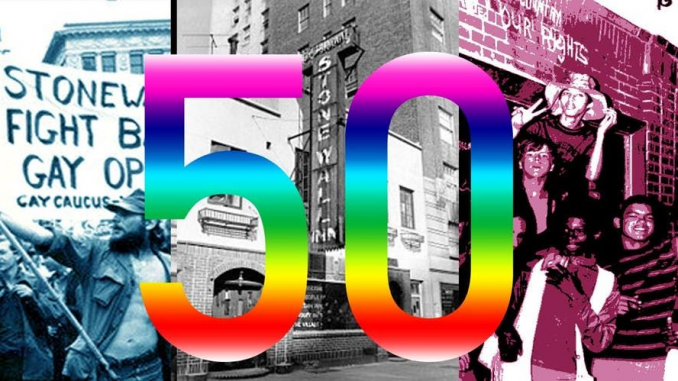
Before Stonewall, there is an event that occurred three years before in the streets of the Tenderloin district in San Francisco in August 1966. These riots launched the transgender activism movement and was one of the first recorded acts of the queer community standing up against the forces of oppression.
Ironically enough, this event occurred in San Francisco a year before 1967, the famous Summer of Love period in which thousands came to the city to participate in the free love and peace movement. It was an exciting period in the city’s history for music, art and culture as a new generation paved the way for political activism and pushing the envelope on the concept of traditional relationships and sexual identity.
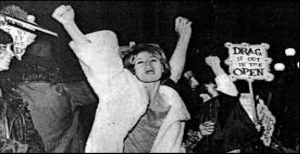
The Compton Cafeteria, located in the heart of San Francisco’s Tenderloin district was a meeting place for local transgender people who would come to hangout, meet with their friends and share a meal as they were not welcome at the neighborhood gay bars due to transphobia. The internal divides that exist today in the LGBTQ community were prevalent back then on a harsher scale as the transgender members of the community were regarded as less than desirable due to rampant transphobia. Many could not find gainful employment due to discrimination and sex work became their only option. In those days many of the arrests of transgender people were unethical but not unlawful as there was a law on the books in San Francisco which made it illegal to cross dress in public which the SFPD used to apprehend and arrest members of the transgender community. By enforcing this, the police were able to consistently harass and arrest those who walked the streets of the Tenderloin. During these times, transgender people were thrown out the windows of the residential hotels that populated the area, in many cases they were butchered with parts of their genitals sliced off as those who were supposed to protect and serve looked the other way. This was a law that would remain until it was overturned in 1974. this story is tragically overlooked as an important story in LGBTQ history as not a single publication covered these riots as it was thought necessary to protect the public from such deviancy. It wasn’t until the year 2006 when a plaque was erected on the sidewalk in front of the shuttered cafeteria at the corner of Taylor and Turk streets following the filming of the documentary, Screaming Queens which was released the year before.
On a summer night in August 1966, the exact date is unknown due to loss of records from that time, the tensions had built to such a level that the patrons of this establishment had enough of the abuse and ostracization. While the nearby progressive Glide Memorial Methodist Church had reached out to the community, there was little to no help at all from other organizations as a maelstrom of hatred had been building steadily for years. For three consecutive nights, the patrons fought against the police after a cup of coffee was thrown into a policeman’s face which led to broken glass windows, furniture hurled across the room along with dishes and sugar shakers on the first night. None of the city’s publications even bothered to cover these riots as there was no desire to give any type of coverage to the plight of those many deemed to be nothing more than deviants, a scourge on the city by the bay. It wasn’t until the early 70’s that the discrimination and violence towards the transgender community notably decreased and it was because of these riots that the improper profiling, unethical arrests and brutality that the community suffered at the hands of law enforcement were brought to light.
2019 marked the 50th anniversary of the Stonewall Riots which single handedly launched the LBGTQ civil rights movement after years of discrimination and de-marginalization by society. The climate was perfect for the birth of this movement as it arrived along with the civil rights movement, the antiwar movement protesting Vietnam and the counterculture movement of the 60’s. Change was literally in the air and tensions were high. The LBGTQ community has always been known for its determination and perseverance in the face of adversity and Stonewall was no exception. The Stonewall Inn was a tavern located in the Greenwich Village section of Manhattan, New York which was owned by the Mafia as many gay bars at that time were owned and operated by heterosexual people. Stonewall was regarded to be a dive in comparison to the other gay bars located in the village as it catered the most marginalized members of the community such as drag queens, transgender people, effeminate men, butch lesbians, male sex workers and homeless gay youth. Because the local police considered these internal groups of the gay community to be easy prey for raids and harassment, no one could ever anticipate the events of those two nights, June 28 and 29.
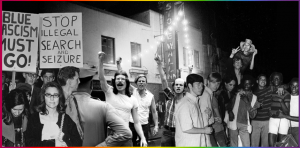
At 1 am on the morning of June 28th, police arrived to conduct a raid on Stonewall but came face to face with the patrons of the bar who had grown tired of the constant harassment and decided that they would no longer stand to be treated like second class citizens. They threw bottles and anything they could get their hands on in the direction of the cops as the cops used their batons and tried to force the patrons into paddy wagons to bring them down to the police station for processing. Approximately 500 people gathered outside the inn to protest the arrests and support the besieged patrons. The following night on June 29th, the police returned for a second night of arrests and were greeted by a thousand plus protestors who gathered outside the tavern, rocks, bottles and bricks were thrown at the cops as the crowd overturned several police wagons and lit garbage on fire. After being harassed and tortured for so many years, these patrons had nothing to lose as the anger had reached its boiling point. The cops retreated when a tactical unit arrived which could do nothing to calm the crowd. Later that morning, according to witnesses, the streets turned still but one could still feel the electricity in the air.
Within a few months, two gay activist groups were born from the aftermath of these riots with the intention of establishing safe places where LGBTQ people could be open without fear of arrest and persecution and one year later, the first gay liberation pride was held on the anniversary of the riots in New York along with three parades held in San Francisco, Chicago and Los Angeles. At this time, several newspapers were established to bring the community together and to begin the process of establishing rights for gay individuals The opening lines of the constitution for one of the activist groups that were born after the riots, the Gay Activists Alliance, started with these words, We as liberated homosexual activists demand the freedoms for expression of our dignity and our value as human beings. We must never forget the resilience and efforts of those who stood up to injustice fifty years ago, let their memory never allow us to be stripped of respect, love and equality. Let us never forget what came before. Let us learn from history for we are bound to repeat it if we choose to ignore it.
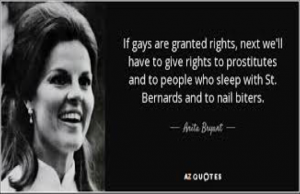
Anita Bryant was a singer with four Top 40 hits in the late 50’s and early 60’s and a former beauty pageant winner from Oklahoma. She served as a brand ambassador from 1969 to 1979 for the Florida Citrus Commission which marketed orange juice. During those years, her smiling face adorned TV screens everywhere as she pushed orange juice through commercials with the slogan a day without orange juice is like a day without sunshine. She was voted the most admired woman In America 3 years in a row by Good Housekeeping magazine and was one of the most influential women In America in several Gallup polls during that time frame. But in 1977, Anita launched the save our children campaign in order to repeal a local ordnance in Dade County Florida which prohibited discrimination on the basis of sexual orientation. Her involvement with the campaign was condemned by gay rights activists and they were assisted by other prominent figures in music film and television and retaliated by boycotting the orange juice that she had promoted. Earlier in 1969 Anita Bryant participated in a rally for decency at the Orange Bowl to protest the controversial onstage behavior at Jim Morrison of the doors. Interestingly the ordinance that Bryant was trying to repeal was sponsored by her former friend Ruth shack. Not surprisingly infamous moral Majority Leader Jerry Falwell joined her in Florida to assist with the campaign. You see the Moral Majority had struck pay dirt with the wholesome Bryant, a mother, singer and former Miss America serving as a seemingly benign face to a truly horrific ordinance which played on the fears and misconceptions of the LGBTQ community. In the beginning of the campaign Bryant referred to gay people as human garbage but later changed her tune by bringing out the tried and true hate the sin but love the sinner to spread her message. The Save Our Children campaign produced a local television commercial showing the wholesome entertainment of the Orange Bowl parade which Bryant hosted, contrasting that with highly sexualized images of the San Francisco Gay Freedom Day Parade including men in leather harnesses kissing each other, dancing drag Queens, and topless women. The commercials announcer ominously accused Miami’s gay community of trying to turn Miami into a hotbed of homosexuality that San Francisco had become. Full page newspaper ads were run in the Miami Herald, Showing collections of headlines announcing teachers having sex with their students, children in prostitution rings , and homosexuals involved with youth organizations followed by the question, Are all homosexuals nice? There is no human right to corrupt our children. Bryant specifically connected homosexuals with child molesters, saying “Some of the stories I could tell you about child abuse and child recruitment by homosexuals would turn your stomach, after all since they can’t procreate, they have to recruit. Bryant’s appearances on religious themed shows such as the 700 club and the PTL club were successful in raising donations to fund the campaign but her other appearances in debates in which she squared off with Bob Kunst and Ruth Shack who represented the other side of the debate, She rarely made any substantial points that went beyond Bible quotes and prayed when asked to provide statistics on homosexuals as child molesters. At another debate, while California was experiencing a severe drought, Bryant connected that to their tolerance of liberals and homosexuals and suggested that other morality laws should be enforced, such as those against adultery and cohabitation out of wedlock.
Ultimately, the campaign was successful resulting in a win by a margin of 69 to 31%. Gay bars across the country stopped serving screwdrivers, vodka and orange juice and replaced them with the Anita Bryant cocktail which was made with vodka and Apple juice as the sales and proceeds of these went to gay rights activists to help fund their fight against Bryant in her campaign. later that year Florida legislators approved a measure prohibiting gay adoption which remained in effect until it was overturned more than 30 years later. Buoyed by this victory by Bryant, several more campaigns started around the country to repeal anti-discrimination ordinances including cities in St Paul, Minnesota, Wichita, Kansas and Eugene, Oregon. While in Iowa giving an interview about Save the Children, she became one of the first persons to be publicly pied as a political act on October 14th 1977. the humorless Bryant quipped at least it’s a fruit pie taking that opportunity to make a pun on the derogatory term of fruit for a gay man. Covered in pie she began to pray to God to have mercy on the activist’s soul before bursting into tears as the cameras kept rolling. As many celebrities supported the orange juice boycott actor Vincent price joked in a television interview that Oscar Wilde’s a woman of no importance referred to her. Through the years Bryant’s name has become synonymous with bigotry and homophobia. The fallout from her political activism set her career into severe decline as the Singer Corporation pulled an offer to sponsor the pilot episode of a possible weekly variety show.
Later in 1980 she divorced her husband Bob Greene citing emotional abuse and latent suicide thoughts.
In 2007 Greene stated blame gay people? I do, their stated goal was to put her out of business and destroy her career and that’s what they did, it’s unfair. After her divorce some Christian fundamentalist audiences and venues shunned Bryant after her divorce, she continued to lose more income while the Florida citrus Commission allowed her contract to lapse feeling that Bryant had worn out as a spokesperson. in a 1980 ladies home Journal article she expressed a desire for the church to wake up and find some way to address and cope with divorce and women’s issues as she also commented on her anti-gay views and say that she was more inclined to say live and let live but just don’t flaunt it or try to legalize it. Later in 1990 she remarried and try to reestablish her music career but ultimately that failed leaving behind a series of unpaid employees and creditors. As of 2008 she resides in Oklahoma doing charity work for various youth organizations while still heading Anita Bryant ministries international.
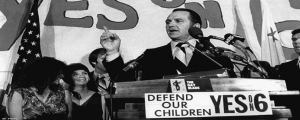
The Briggs initiative, otherwise known has California proposition 6 was the first attempt to restrict gay and lesbian rights through a statewide ballot measure. This initiative provided that a public school teacher, teacher’s aide, administrator or counselor could be fired if found do you have engaged in either public homosexual activity which was defined as an act of homosexual sex which was not discreet and not practice in private or public homosexual conduct in which the initiative defined as the advocating, soliciting , imposing , encouraging, or promoting a private or public homosexual activity directed at more likely to come to the attention of school children and or other employees. the idea for this initiative was formed during the success of the Dade County antidiscrimination repeal. This initiative was sponsored by John Briggs, a conservative state legislator from Orange County. In order to combat this controversial initiative, a coalition of activists including Sally Gearheart, Bill Kraus and openly gay San Francisco supervisor Harvey milk who mobilized under the slogan,” come out come out wherever you are” came together to battle the initiative. Harvey Milk was convinced that the more homosexuals that came out from being in the closet, to their families, their friends and their coworkers, then they could demonstrate that there was nothing to fear, that this was a human issue and discrimination against any group is morally and ethically wrong. like the Bryant campaign, the Briggs initiative campaign relied on weapons of fear and intimidation by spreading falsehoods about the LGBTQ community through commercials in literature. As a result of this gay men and lesbians came out to their families and their neighbors, spoke in their churches and community centers, compose letters to the press and most importantly revealed that gay people really were everywhere and included people that they already knew and cared about.
The Briggs initiative was placed on the California state ballot in the November 7th 1978 election, earlier in the month of September the polls showed support for the measure with 61% of voters supporting it while 31% opposed it. By the end of September, the poll shifted to 45% in favor of the initiative and 43% opposed and 12% undecided. Diverse politicians such as Ronald Reagan , Jerry Brown , Gerald Ford and president Jimmy Carter all opposed the measure. It can also be noted at this time gay Republicans became organized against the initiative on a grassroots level, the most prominent of these groups went on to become established as the Log Cabin Republicans. Former state governor Ronald Reagan who was preparing to run for president moved to publicly oppose the measure going as far as to write an editorial in the Los Angeles Herald examiner opposing it. The timing of his opposition was surprising because he certainly would need the support of Conservatives and moderates who were not comfortable with the idea of gay teachers in schools but this time, with this issue, he stuck by his convictions. in the editorial, he wrote “whatever else it is. homosexuality is not a contagious disease like the measles. prevailing scientific opinion is that a person’s sexuality is determined at a very early age and that a child’s teachers do not really influence this “. The initiative was defeated by a margin of 58.4 percent to 41.6%, It can also be noted that the measure was soundly defeated in Orange County which could be taken as a final insult to senator Briggs. Following his retirement from politics in 1981, Briggs operated a successful political and business consulting firm for 15 years, In 2008 Briggs was quoted as saying with the passage of over 30 years America has changed including me and although he still regarded Anita Bryant as a hero he noted that he thought differently now and respectfully requested others do as well and regard and respect each other in a civil manner despite our differences.
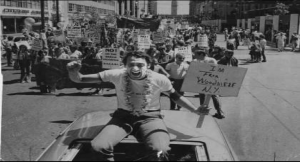
One of the most iconic figures in LGBTQ history was Harvey Milk, who moved to San Francisco from New York City in 1972 in order to find himself and to make a difference in the world as he just celebrated his 40th birthday and lamented that he had not accomplished anything with his life. He was one of many gay and bisexual men who migrated to San Francisco in the early 70s and took advantage of the changing political and economic power of the Castro district. In 1974, Milk founded the Castro Street Fair which was an immediate success, tripling the daily receipts of all businesses located in that district. In 1975 while President Gerald Ford was visiting San Francisco, he was nearly assassinated by Sarah Jane Moore but a former marine who had been walking by grabbed her arm as the gun shot off into the pavement. This marine, Oliver Sipple was a closeted gay man who had been involved with Milk’s former lover, Joe Campbell from years before and Milk decided that this was an opportunity to demonstrate that gay people could be heroes and destroy the myths of gay people being deviants and undesirables even though Simple had no desire to be in the spotlight. Milk contacted the media and it was revealed in a column written by legendary columnist, Herb Caen, that Sipple was not only a hero but gay. Unfortunately this thrust Sipple into the spotlight as his mother, a conservative Baptist refused to have anything more to do with her son. Sipple sued the newspaper for invasion of privacy as President Ford sent him a note of thanks for saving his life. Milk noted that if Sipple hadn’t been gay, He would have been invited to the White House.
After this, Milk embarked on his political campaign which was passionate but disorganized, he was prone to emotional outbursts, He would take to the streets, standing on the steps of buildings armed with a bullhorn, and proclaiming my name is Harvey milk And I am here to recruit you. He had a flair for promoting himself and that causes that he believed in, he would spend countless hours on the streets registering voters and shaking hands with whomever he came into contact with. He partnered with Jim Jones and the People’s Temple, employing members of that infamous church to work the phones in his office.
He lost 3 consecutive campaigns until 1977 when he won his seat as a city supervisor. The headquarters for this successful political campaign was his Camera shop, Castro Camera in which Milk literally pulled people off the street to join his staff, it can also be noted that this is when this is when he became friends with famed activist, Cleve Jones. Harvey served only 11 months in office, during his term he sponsored a bill banning discrimination in public accommodations, housing and employment on the basis of sexual orientation which passed by a vote of 11 to 1. Milk was known for building coalitions, an example of this is when the Teamsters wanted to strike against beer distributors, particularly Coors beer who had refused to sign the union contract, a Teamsters organizer contacted Milk to reach out to the gay bars and Milk requested that the union hire more gay drivers. Milk successfully convinced the owners of the gay bars to cease selling Coors product. After this Milk found a strong ally in organized labor thus leading to the self proclaimed title, the mayor of Castro street. Later Milk and a few gay business owners founded the Castro Village Association which built on the idea that the gay community should buy from gay businesses. Milk tried to introduce a commuter tax so that office workers who lived outside the city and drove into work would have to pay for city services they used but that failed to pass. The biggest targets for Milk were large corporations and real estate developers as he built a reputation as a voice for the blue collar worker, the marginalized communities and the gay community.
Milk had agreed with fellow supervisor Dan White whose district was located just south of the Castro that a mental health facility for troubled adolescence should not be located there, however as Milk learned more about the facility he decided to switch his vote which led to White’s loss on the issue. This led to a volatile relationship between the two freshman supervisors as White consistently voted against any future proposals or bills that Milk composed. This would set the stage for the horrific event which was soon to come in November 1978. Later he cosponsored a sweeping civil rights bill which would outlaw discrimination based on sexual orientation in the city and the bill passed with Dan White as the only supervisor to vote against it. This was followed by the famous pooper scooper bill that stated that all residents of the city must be responsible enough to pick up their pet’s feces, Milk had called a press conference at Dolores Park and during the conference, he accidently stepped into a pile of poop while the cameras rolled but staffers had revealed that Milk had been out in the park an hour before, setting the stage for his accident, once again demonstrating his savvy for promotion and ability to remain in the media spotlight. Dan White decided that he could not support his family with the salary he was getting as a supervisor and he felt overshadowed by Milk so he tendered his resignation but within days he requested it to be withdrawn as Mayor Moscone considered the request but decided to listen to the other supervisors who convinced him to do otherwise as they felt reinstating White would go against the liberal direction of the board. On November 27th 1978, Moscone was planning a press conference to announce White’s replacement but White drove to City Hall in the early morning hours and avoided the metal detectors in the front lobby by entering through a basement window and proceeded to Moscone’s office with a gun and assassinated him in cold blood. He left the mayor’s office through a back door and while walking down the corridor, he encountered Milk and asked him to step into his former office and assassinated him in the back of the head, he left City Hall drove to a pay phone, called his wife to meet him at a church and turned himself in. I would like to note here that Milk had recorded tapes throughout his career and in one of these tapes, he said, quote, if a bullet should enter my brain, let that bullet shatter every closet door, end-quote”
On a personal note, when news broke of this tragedy, I was climbing the stairs to my biology class as a sophomore in high school, I listened to the news on the PA and although I wasn’t familiar with Harvey Milk, I knew who Mayor Moscone was as he was well regarded in my family and I was devastated by the news, later as I learned about Milk from reading the articles in the paper following the tragedy, I mourned the loss of this man and felt sadness at what might have been, had he not been gunned down. I also was coming to terms then at the probability that I was gay.
That night on the news in my parent’s living room, I watched thousands of mourners marching with candles in the cold November air from the Castro District down Market Street to City Hall. Once they finished their two mile march at the steps of City Hall, they lifted their candles high in the air, this entire demonstration was peaceful, a sharp contrast to the demonstration that would erupt after the outcome of Dan White’s trial. Dan White was charged with two counts of murder and held without bail and was eligible for the death penalty due to a recent proposition that passed years before. He showed no remorse for the crimes except for an eight minute call to his mother. At the trial, his defense attorney successfully argued that someone like White from a good background couldn’t possibly be capable of killing someone in cold blood, surely the manipulations of the politicos at City Hall confounded and confused him and the excessive junk food binge on the nights before the murders surely contributed to his diminished mental state. This defense was named the Twinkie Defense. On May 21, 1979, the jury came back and acquitted him of the first degree murder count but found him guilty of two counts of voluntary manslaughter which led to sentence of seven and two third years, with the sentence reduced to time served and good behavior, he would be eligible to be released in five years. Once the sentence was announced, angry residents marched from the Castro to City Hall, screaming he got away with murder! Avenge Harvey! Cars were set on fire, storefront windows were busted out and it was a scene of complete chaos. A newspaper rack set on fire was hurled through a broken glass door of City Hall as an on the scene reporter asked a rioter why were they were destroying the city, he replied with “ just tell them we ate too many damn twinkies, this is why this is happening” This night became known as the White Night Riots and the Chief of Police ordered the police not to retaliate but to hold their ground, however later that night, several police cruisers drove to the Elephant Walk bar on Castro Street and pulled patrons out of the bar and beat them on the street with nightsticks and then proceeded to attack others in the vicinity. They were ordered out of the neighborhood and the next day it was revealed that the damages that night totaled one million dollars, 61 police officers and more than 100 residents had been hospitalized. In 1980, it was decided to do away with supervisor elections as it was thought that this political process led to the assassinations and the aftermath and the city returned to district representative elections, feeling that a Board of Supervisors would lead to divisiveness again. Dan White was released just over five years later in 1983 and on October 21, 1985 after losing his family and not being able to find work and despondent over his actions, took his life by carbon monoxide poisoning in a running car in the garage of his ex wife, clutching pictures of her and his children. There is a myth in San Francisco historical lore, that White was antigay but that is simply not grounded in fact, White’s campaign manager was gay, White and Milk often met for coffee and lunch and in the beginning worked on several projects but once White felt betrayed by Milk after he reversed position on the center for the troubled youth opening in White’s district, that set the events in motion which would lead to the tragedy.
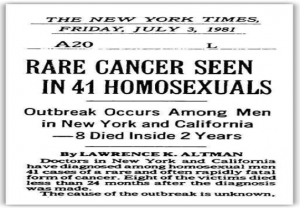
On July 3, 1981 in the New York Times, section A, page 30, appeared an alarming article reporting a rare cancer outbreak reported among gay men in New York and California with 41 cases confirmed all leading to death. This was the beginning of one of the most horrific medical epidemics since the Black Plague, thousands of innocent lives were lost, fear ran rampant, religious groups were convinced that this was God’s revenge for the sin of homosexuality and they wasted no time spreading that message making it impossible for scientific facts to be heard. An indifferent federal administration sat on their hands and refused to confront the issue head on due to the fact that the Republican party by this time had been co-opted by the Religious Right. Appropriate funding to combat the epidemic through education and research was not a priority at the time as in the beginning, the epidemic was considered to be an issue for the gay community and this particular administration had no desire to help those who were considered to be expendable on the basis of their lifestyle. In the May 11th 1982 edition of the New York Times, this disease was named GRID (Gay Related Immune Deficiency) which was a short lived label as very soon the disease began to appear in intravenous drug users and hemophiliacs, in August of that same year, the disease was renamed AIDS for Acquired Immune Deficiency Syndrome, but by this time, the damage against the gay community had been done and in certain parts of the world and here in America, there are those who still maintain that this remains a gay plague brought on by God as a punishment. How often throughout history have we been guilty of blaming the victims of affliction for their condition, a punishment for immorality, labeling this disease as a metaphor for sin was a common occurrence in the religious and conservative circles of the world. Much time was lost when too much time was spent on debate and lack of compassion and fear stoked by the Religious Right cost too many lives that could have been avoided. As noted by author Susan Sontag in her book, Illness as Metaphor, nothing is more punitive than to give a disease a meaning.
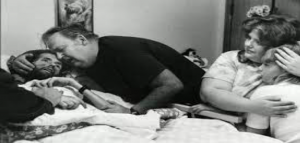
While the federal government failed miserably to make any headway in combating the epidemic, it was left to the gay community and local city and state governments to address the situation. In 1982, the city and county of San Francisco developed the model of care which focused on home and community based care since many health care workers in the hospitals were too afraid of coming near AIDS patients because of the fear and stigma associated with the disease. The first AIDS ward was established at SF General called Ward 5B which focused on caring since there was no cure for the disease, there was an emphasis on one on one physical communication with patients, several nonprofits such as the SF Aids Foundation and Project Open Hand were established to provide services for those afflicted. Meanwhile in New York, firebrand activist and playwright Larry Kramer launched the GMHC, Gay Men’s Health Crisis an organization that provided resources and services for those with HIV & AIDS, during his tenure, he blasted the ineffectiveness of the federal government to respond to the crisis and called out several notable politicians who were known to keep their homosexuality private including NY Mayor Ed Koch, due to his confrontational style which was a blessing and a curse at the time, he was ousted as the leader of the GHMC and went on to write the play, The Normal Heart which chronicled the early years of the epidemic. It is notable that he wrote this play after visiting Germany and made parallels between the extermination of Jews and what was taking place with the AIDS epidemic. Still frustrated and angered by the lack of progress by the government, Kramer went on to establish ACT UP which specialized in taking on bureaucracy and pushed for civil disobedience to bring to light the issues at hand. ACT UP successfully put medical treatment in the hands of patients by targeting the FDA and pharmaceutical companies.
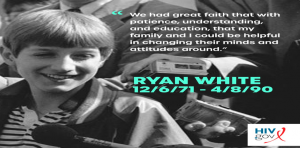
In 1983, 3000 cases were reported and 1000 people died from AIDS in the US alone and in San Francisco, the first outpatient AIDS clinic was opened. In 1984, a 13 year old hemophiliac named Ryan White becomes infected with the AIDS virus from a contaminated blood treatment, he is banned from attending school and becomes a national spokesperson against AIDS stigma and discrimination before finally being allowed to attend a nearby school after a lengthy court battle in Indiana. Ryan passed away just before his high school graduation after living five years longer than the doctors had predicted when he was diagnosed, his mother started the Ryan White Foundation in 1992 which worked to increase awareness of the disease with an emphasis on hemophiliacs and on families caring for relatives afflicted with the disease. By 2000, declining donations forced this foundation to merge with the larger AIDS Action. In 1985, the FDA licensed the first HIV test for screening blood supplies as the First international AIDS conference was held in Atlanta and has been held every year since. Legendary actor Rock Hudson was signed to join the cast of the decadent soap opera, Dynasty and audiences were taken aback at the matinee idol’s gaunt appearance and rumors swirled about this as he later announced he had AIDS and passed away later that year. This was the first celebrity death from AIDS and close friend and actress Liz Taylor used her clout and celebrity to help launch AMFAR ( American Foundation for AIDS Research) and appeared alongside Nancy Pelosi to testify before Congress on the need for increased funding to combat the epidemic. In 1986, the San Francisco AIDS Foundation held their first AIDS Walk to raise funds for services to assist those living with HIV/AIDS, the first clinical trials of AZT began and the number of AIDS cases increased to 38,000 worldwide while President Reagan finally mentions AIDS in a speech, for the first time ever since being elected in 1980. In 1987, AZT is approved for use but many patients report horrendous side effects while the CDC debuts public service announcements about AIDS. That same year, the AIDS Memorial Quilt makes it’s debut on the lawn of the National Mall in Washington with 1,920 panels about the size of a football field, neither Reagan nor his successor Bush come to visit it, Bill and Hilary Clinton came to visit it in 1996 when it returned to be displayed. The idea for this quilt began in San Francisco when Cleve Jones was informed in 1985 that a thousand men in SF had died from AIDS, during the annual candlelight march to commemorate the anniversary of the deaths of Milk and Moscone, he instructed the marchers to write the names of the deceased on placards and attach them to the outside walls of the Federal Building and noticed the placards formed a pattern like a quilt. Jones and his friends were inspired to create a memorial in which loved ones across the country could create a panel to honor the deceased and the panels were shipped to San Francisco where volunteers sewed the panels together to create the quilt. The first panel was created for Cleve’s best friend, Marvin Feldman. For the record, the last time that the quilt was displayed in it’s entirety was in 1996. The quilt is now housed in Atlanta when portions of it are not being displayed, it now consists of 48000 panels and weighs 54 tons.
In 1988, the first World AIDS day was held on December 1st and the city of San Francisco launches the nation’s largest needle exchange program to help curb transmission of the virus among the intravenous drug users. In 1989, Congress creates the National Commission on AIDS and activists hold demonstrations protesting the slow process of releasing AIDS drugs on the Golden Gate Bridge.
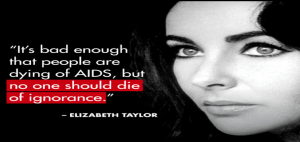
Nine years into the epidemic, into the 90’s, the Americans with Disabilities Act is enacted to prohibit discrimination against those living with HIV/AIDS, Freddie Mercury is the latest celebrity victim of the epidemic and AIDS becomes the leading killer of men aged 25 to 44. In 1996 with the introduction of pro-tease inhibitors as medications with fewer side effects, the number of new cases declines for the first time since the start of the epidemic. With these medications, HIV has become a manageable condition but much work still needs to be done in AIDS research.





Leave a Reply